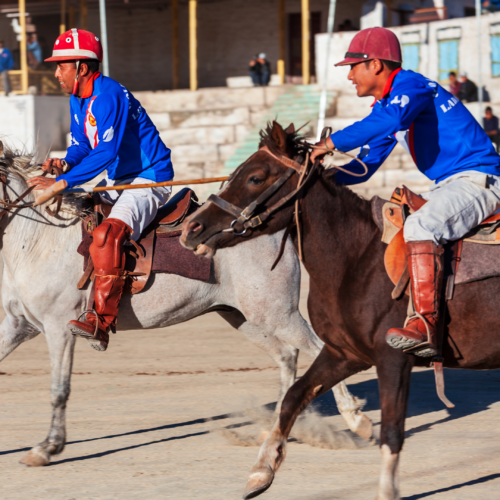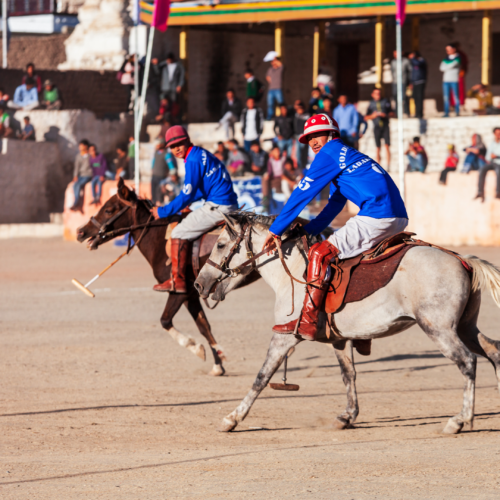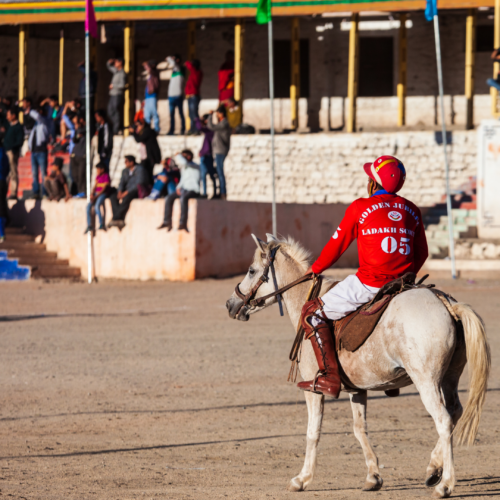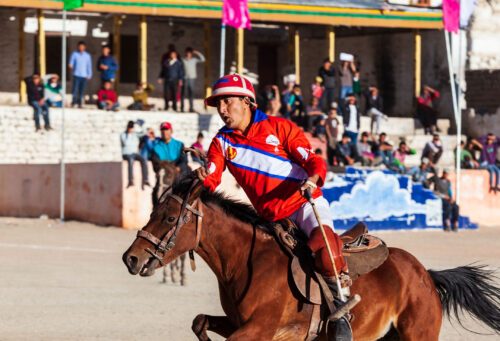Having its origins in the 15th century, the Ladakh Polo Festival, a concept conceived by a Baltistani princess and mother to Ladakh’s ruler Singge Namgyal, has grown into an integral part of local celebrations like Losar and Nowruz. It is not simply a game, but an ode to long-standing customs where six-player teams maneuver through the region’s arduous landscapes to score goals in sync with traditional musical instruments.
In contrast with conventional polo, Ladakhi Polo is set within the harsh terrains of Ladakh, transforming it into an intensely competitive and physically demanding marvel. The sound of hooves clashing against unspoiled grounds recollects the prestigious past of this game, once exclusive to monarchs and aristocrats.


What sets Ladakh’s Polo apart is its adaptation to high-altitude settings, resulting in a spellbinding concoction of dexterity and strategic prowess against the mighty backdrop of towering mountains. The height adds another layer of complexity to the game, making it nothing short of an adrenaline-pumping adventure for participants and onlookers alike.
Stumbling upon a polo match during your Ladakhi journey can feel serendipitous; but beware – watching polo elsewhere may never be as captivating again. As Scottish explorer David Fraser described back in 1906, stumbling upon a match in Leh’s bustling market street was an unforgettable showcase of agility and speed at their finest – truly representing the spirit of Ladakhi Polo.
The players in Ladakh exude remarkable hand-eye coordination that puts them leagues ahead of international polo players.
Although the British made polo an upscale pursuit, the Ladakhi variant remains true to its inclusive essence. Matches now occur at the local town’s polo ground, cradled between awe-inspiring mountains and a 17th-century palace. This breathtaking locale presents wanderers seeking unparalleled cultural experiences and an unmatched opportunity during their Ladakhi escapades.

